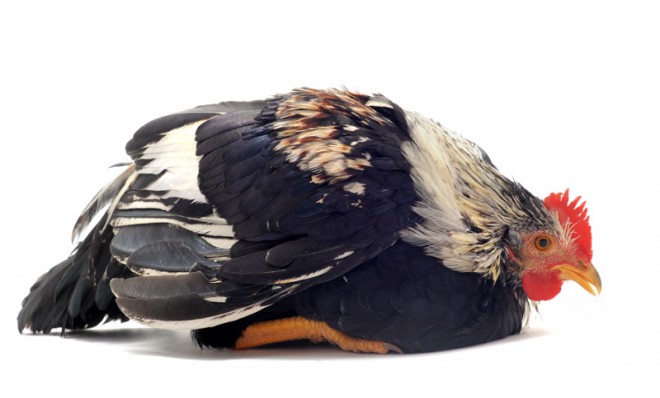The mystery of the bird's missing penis
97 percent of avian males don't have a phallus

If you were to chase down a male chicken and lift him high over your head to take a look at his junk, you wouldn't see much other than some ruffled feathers and scaly legs. That's because roosters, like 97 percent of avian species, have tiny, vent-like nubs in lieu of an actual penis.
Male birds are usually equipped with something called the cloaca — a small opening that handles all of the region's typical functions, including waste excretion and copulation. When birds mate, for example, they rub their cloacae together until the male bird ejaculates into the female. Biologists romantically call this lovemaking sesh a "cloacal kiss."
So why no penises? Martin Cohn, a developmental biologist at the University of Florida, has shed some light on the phenomenon. For a new study published in the journal Current Biology, Cohn and his team cut tiny windows into chicken and duck eggs to take a peek at just how the embryos developed.
The Week
Escape your echo chamber. Get the facts behind the news, plus analysis from multiple perspectives.

Sign up for The Week's Free Newsletters
From our morning news briefing to a weekly Good News Newsletter, get the best of The Week delivered directly to your inbox.
From our morning news briefing to a weekly Good News Newsletter, get the best of The Week delivered directly to your inbox.
Unlike their clucky, eunuch cousins, male ducks actually have phalluses (which we'll get to in a bit). Which means at some point during the developmental process, a chicken's penis suddenly stops developing. Nature News reports:
They found that chickens initially form penises similar to those of ducks, but that on about the ninth day of development, the nascent chicken penis — called a genital tubercle — stops growing and begins to shrink. [Nature News]
To reiterate: The penis shrinks! Penis development isn't just brought to a screeching halt — some force is causing the male chicken's developing phallus to wither away.
The culprit is a gene called Bmp4, which, it turns out, is actually related to cell death. When chickens hit their ninth day of development, the gene flickers to life, and the budding penis starts to regress.
"Regulation of the balance between cell proliferation and cell death is essential for controlled growth and development," Cohn tells PhysOrg. "Too much cell division or too little cell death can lead to overgrowth or misregulated growth, as in cancer."
A free daily email with the biggest news stories of the day – and the best features from TheWeek.com
As for why Bmp4 stifles avian penis growth, Cohn and his team aren't entirely sure. Maybe it's a biological concession that protects against genital birth defects. Maybe a lack of a penis makes some birds more aerodynamic. Bob Montgomerie, an evolutionary biologist at Queen's University in Ontario, thinks the cloaca may have evolved to allow female hens to escape forced copulation.
Which brings us back to our friend: The male duck. Unlike chickens, ducks don't express the Bmp4 gene while developing. Without any genetic forces inhibiting genital development, the flat-billed birds develop massive, corkscrew-like penises that, in some duck species, can exceed their own body length multiple times.

Thankfully, female ducks have evolved their own methods for protecting against forced copulation: Their vaginas also develop in corkscrews, but clockwise to make entry physically impossible. Then, when they find a male to their liking, their vagina muscles expand and the lovebirds are free to make little ducklings. It's not quite a cloacal kiss. But it's as Mother Nature intended.


